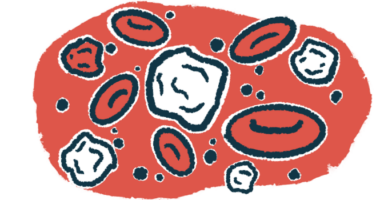Protein interaction may lead to new strategy for treatment of ALS
Scientists zero in on how TDP-43 sticks together with another protein

By taking advantage of a molecular interaction between the disease-related protein TDP-43 and another, innocuous protein, scientists have found a novel strategy that potentially may be used as a treatment for amyotrophic lateral sclerosis (ALS).
“Importantly, this interaction could be key to unlocking a treatment not just for ALS but also for other related neurological conditions, like frontotemporal dementia. … It is a gamechanger,” Michael Strong, MD, a physician-scientist at Western University, in Canada, said in a university press release.
The team detailed their findings in a manuscript titled “Mitigation of TDP-43 toxic phenotype by an RGNEF fragment in amyotrophic lateral sclerosis models,” published in the journal Brain.
According to the researchers, “it seems we are on the edge of a new era for the developing of treatments for neurodegenerative diseases such as ALS.”
Scientists say TDP-43 protein interactions could be ‘key’ in treatment of ALS
Although the causes of ALS are not fully understood, the TDP-43 protein is thought to play a central role. In virtually all ALS cases, TDP-43 forms toxic clumps inside of nerve cells, which damage nerves and are thought to drive disease progression. Toxic clumps of TDP-43 also are characteristic of the related neurological disorder frontotemporal dementia.
In previous studies, Strong and colleagues at Western’s Schulich School of Medicine and Dentistry, and other institutions, had found that the TDP-43 protein is able to stick to another protein called RGNEF.
Now, the researchers conducted a detailed battery of molecular experiments in which they zeroed in on exactly how these two proteins stick together. They found that TDP-43 specifically can bind to a terminal section of RGNEF dubbed NF242.
NF242 is especially good at interacting with the disease-associated version of TDP-43 that characterizes ALS, the researchers found. In theory, this could mean that NF242 could be a useful treatment strategy for ALS, the basic idea being that NF242 could bind to TDP-43 and prevent it from forming toxic disease-driving clumps.
“Blocking toxic aggregates with an innocuous protein … could be as beneficial as eliminating the aggregates,” the researchers wrote.
To put this idea to the test, the researchers conducted experiments in fly and mouse models of ALS. In both animal models, inducing the production of NF242 led to less TDP-43 clumping as expected — and, as a result, the animals lived longer and had significantly better motor function.
Altogether, this study “suggests that a therapeutic strategy expressing NF242 or a biologically active fragment of NF242 could be promising in humans” with ALS and other disorders mediated by toxic TDP-43, the researchers concluded. However, they stressed that further work is needed to bring this approach toward clinical testing.
Blocking toxic aggregates [protein clumps] with an innocuous protein … could be as beneficial as eliminating the aggregates.
Strong and colleagues have set a goal of bringing this strategy into clinical trials in five years. To help support that goal, the Temerty Foundation, a Canada nonprofit, is donating $10 million CAD (about $7.3 million) over the next five years.
“Finding an effective treatment for ALS would mean so much to people living with this terrible disease and to their loved ones,” said James Temerty, founder of the foundation, who added that “Western is pushing the frontiers of ALS knowledge, and we are excited for the opportunity to contribute to the next phase of this groundbreaking research.”
According to Western, this donation brings to $18 million the Temerty Foundation’s total investment in neurodegenerative disease research at the university.
“Dr. Strong’s relentless dedication to his field is matched only by the Temerty family’s deep desire to make a difference for the thousands of people around the world diagnosed with this devastating disease,” said Alan Shepard, president of Western University.
“The investment — and foresight — of the Temerty Foundation has accelerated progress in finding an effective treatment for ALS. We are grateful for the Temerty family’s commitment to life-changing research,” Shepard added.







